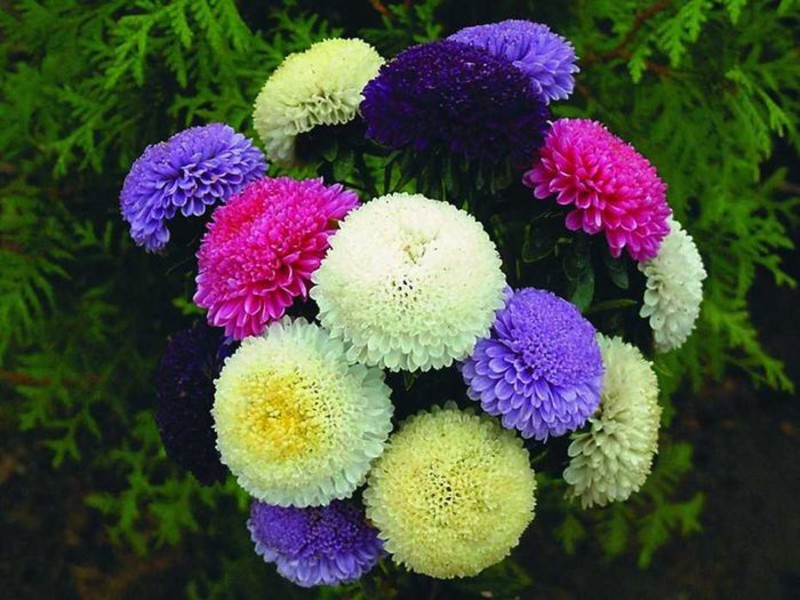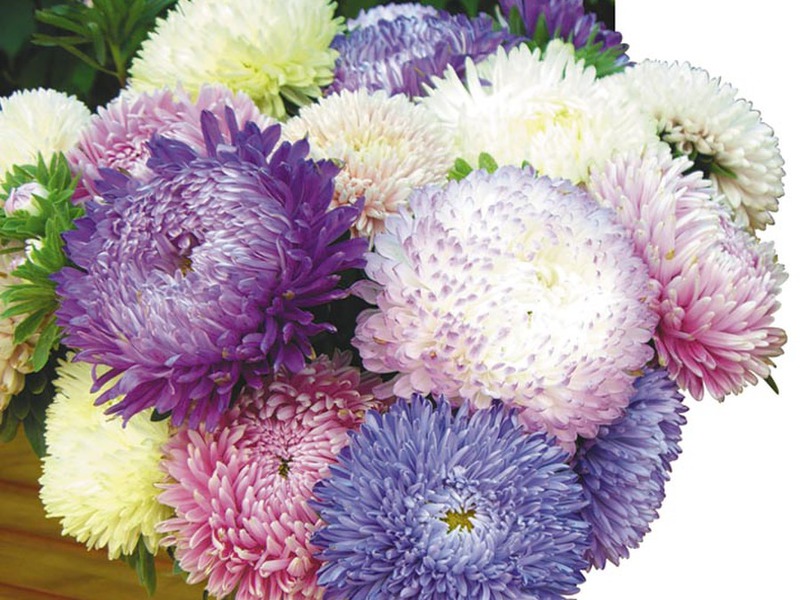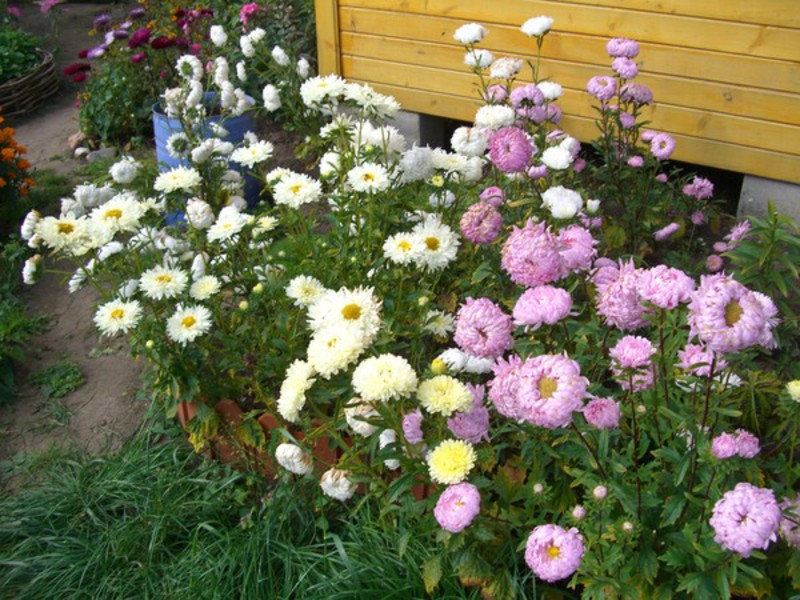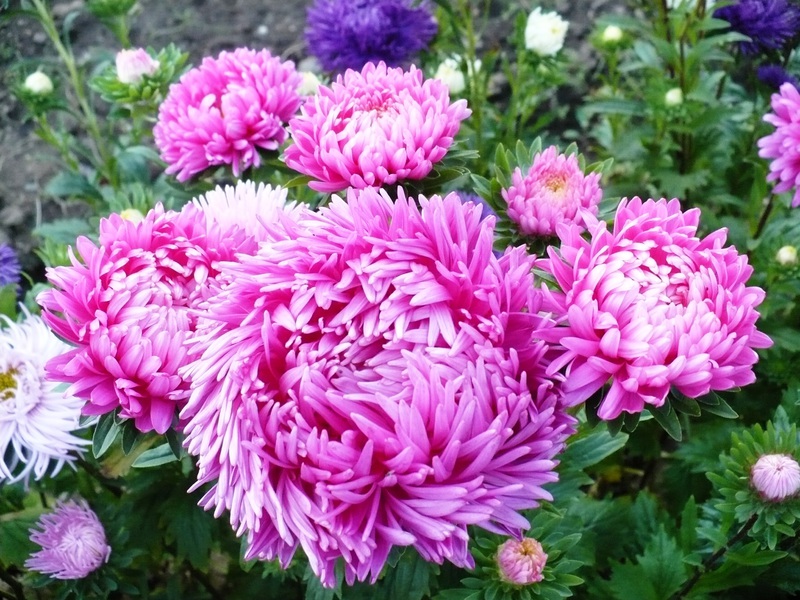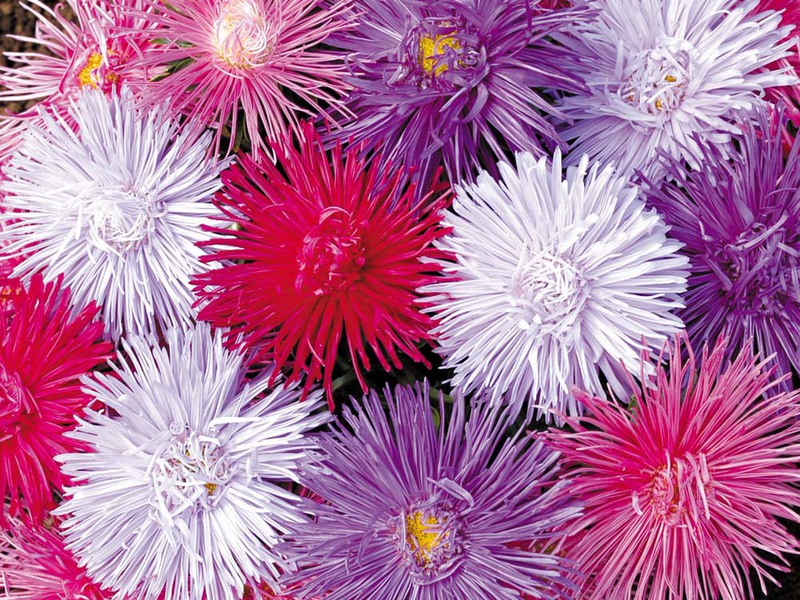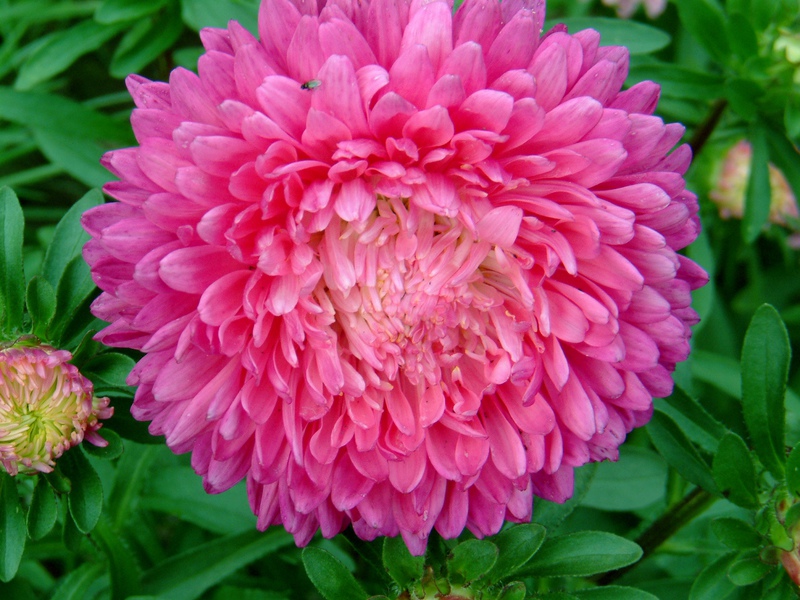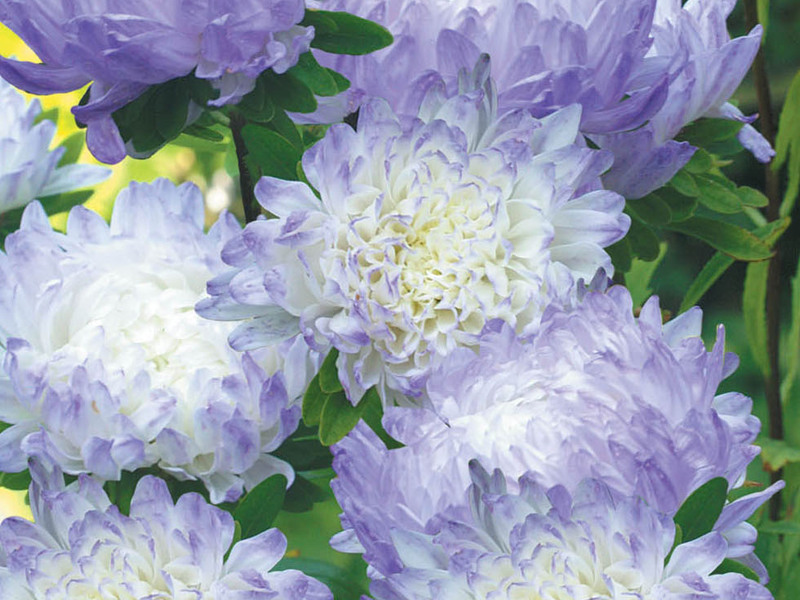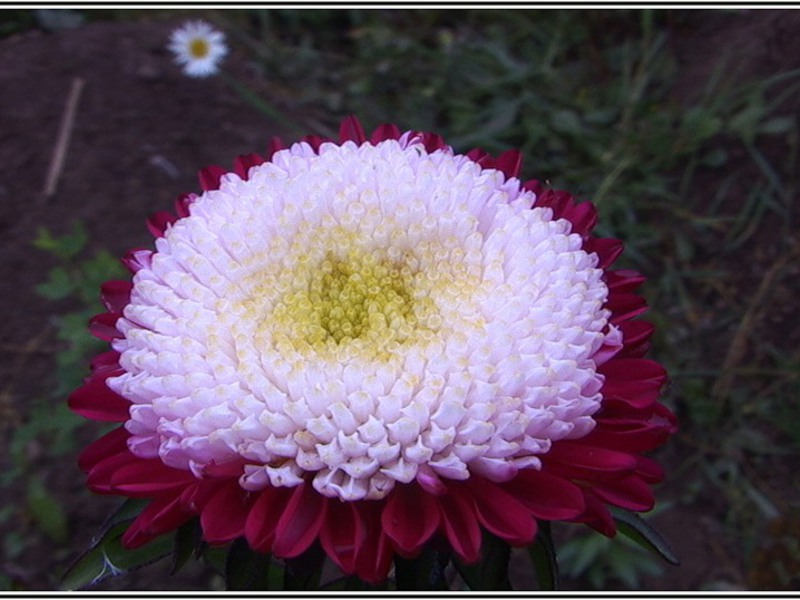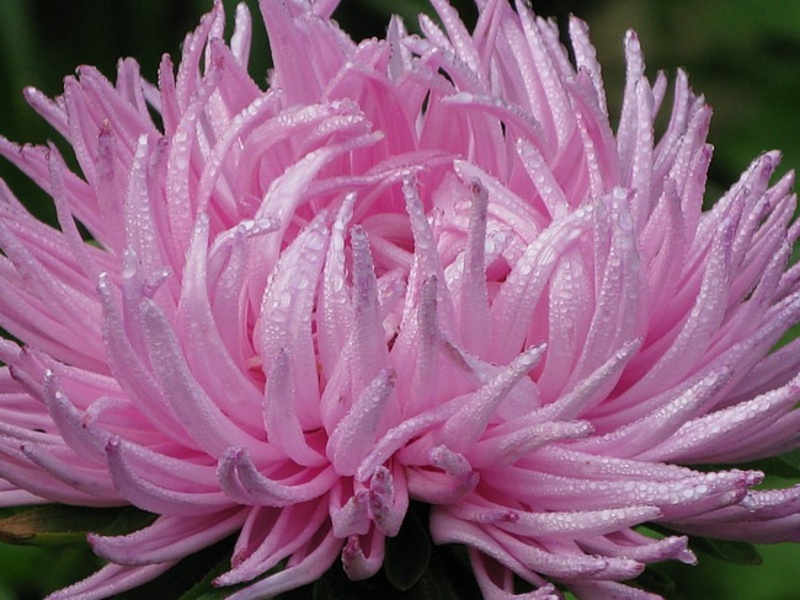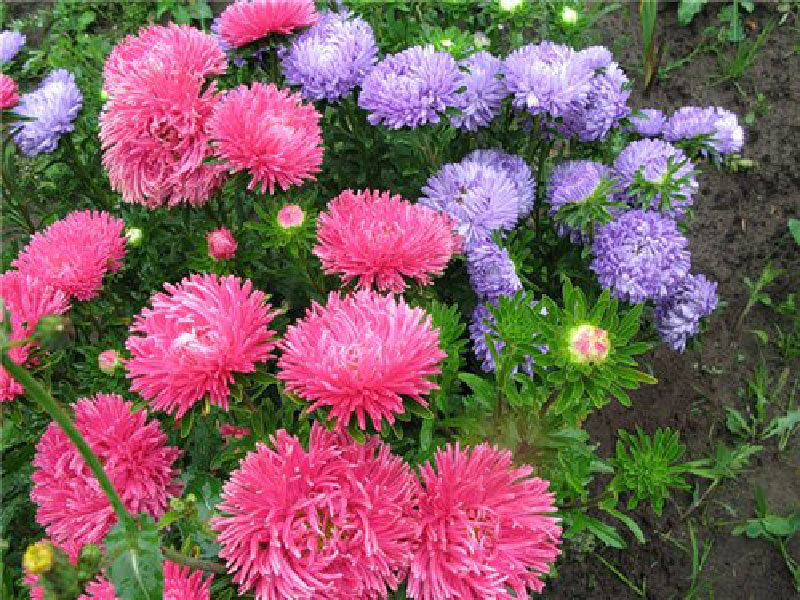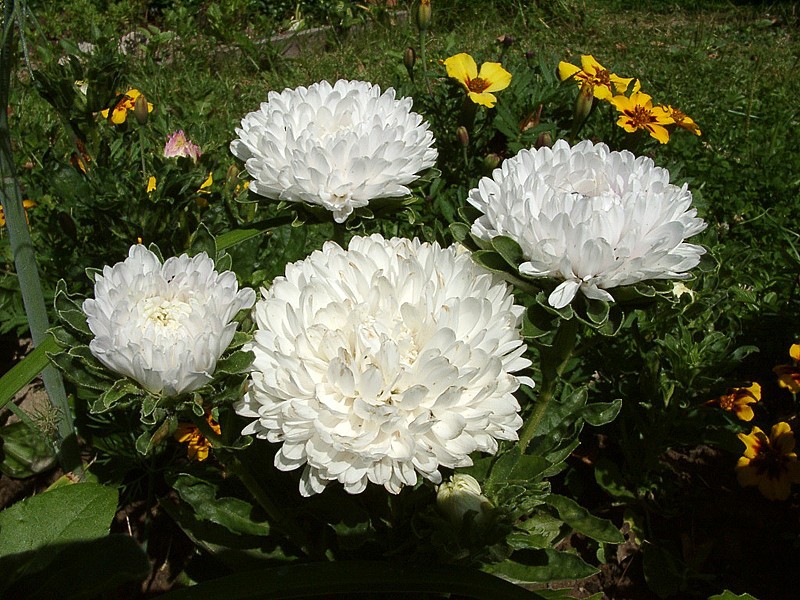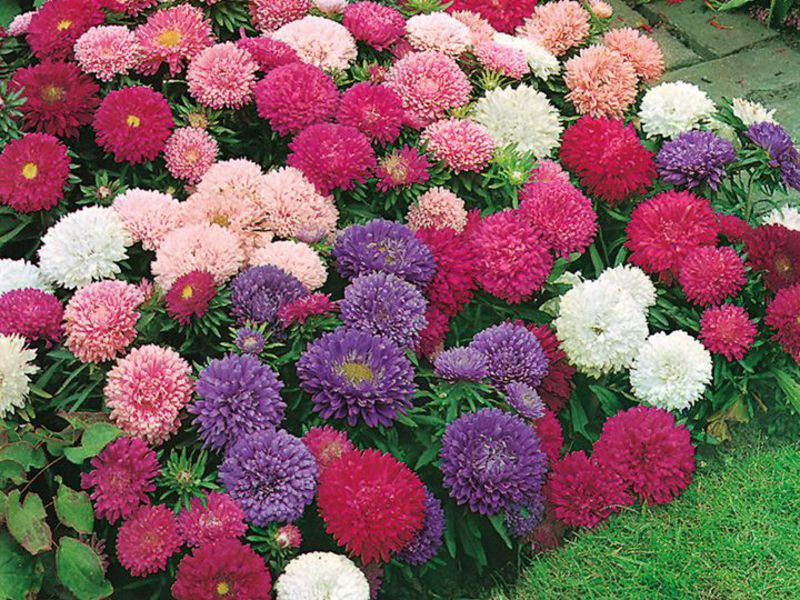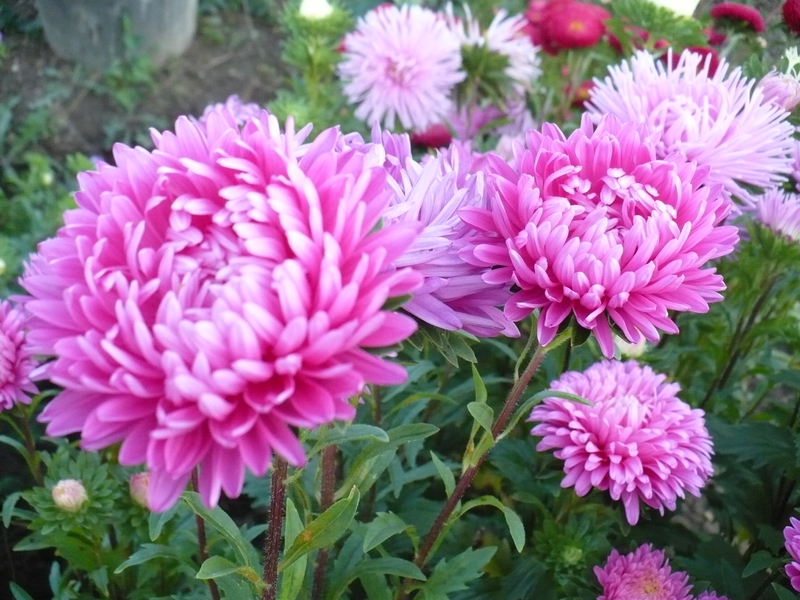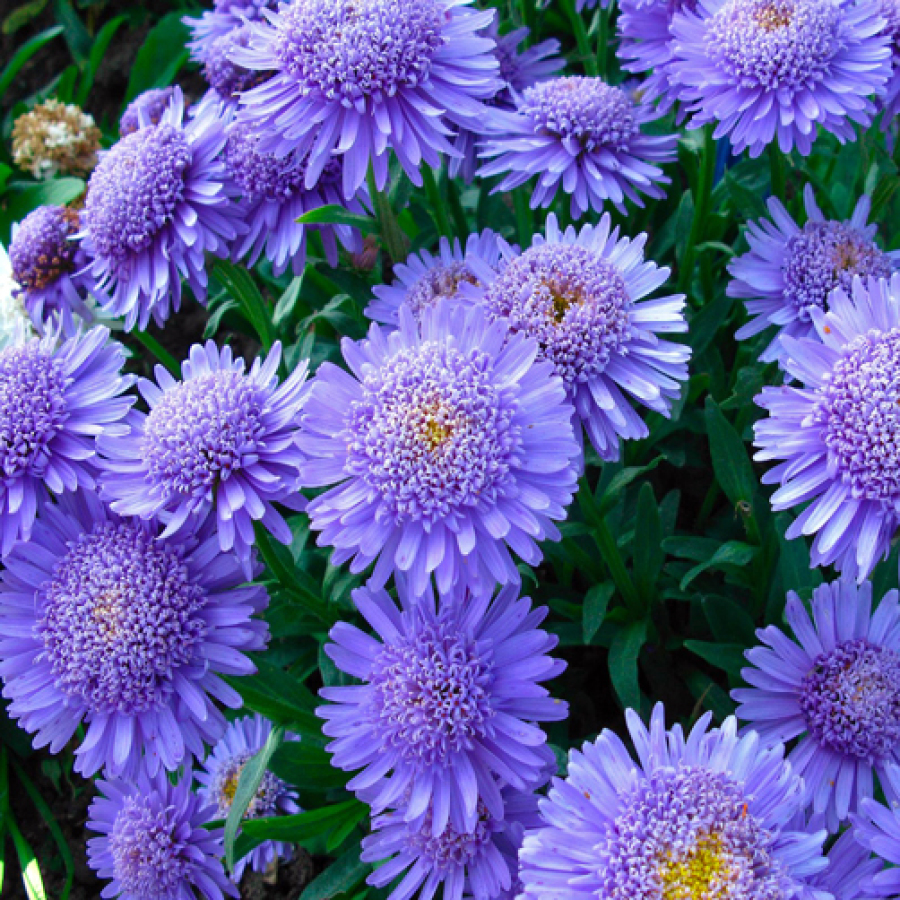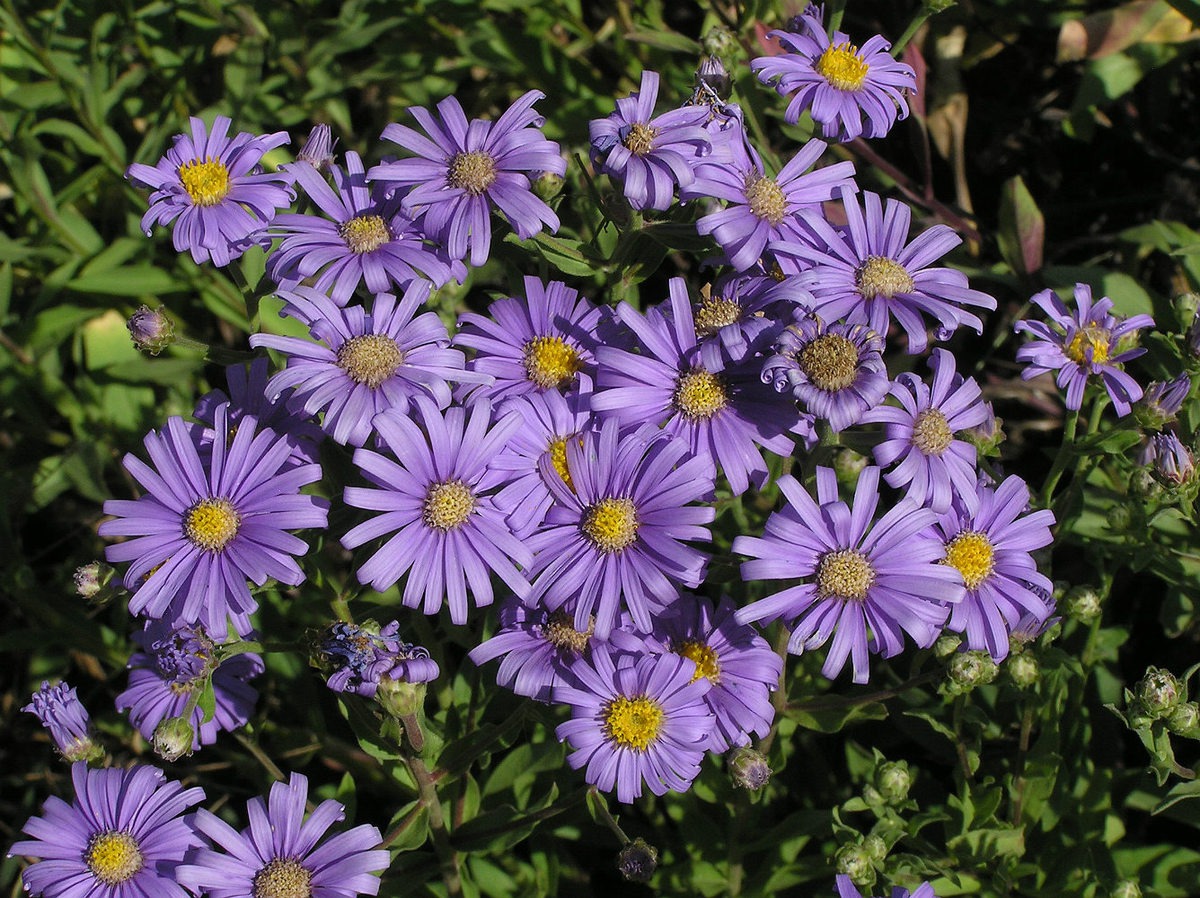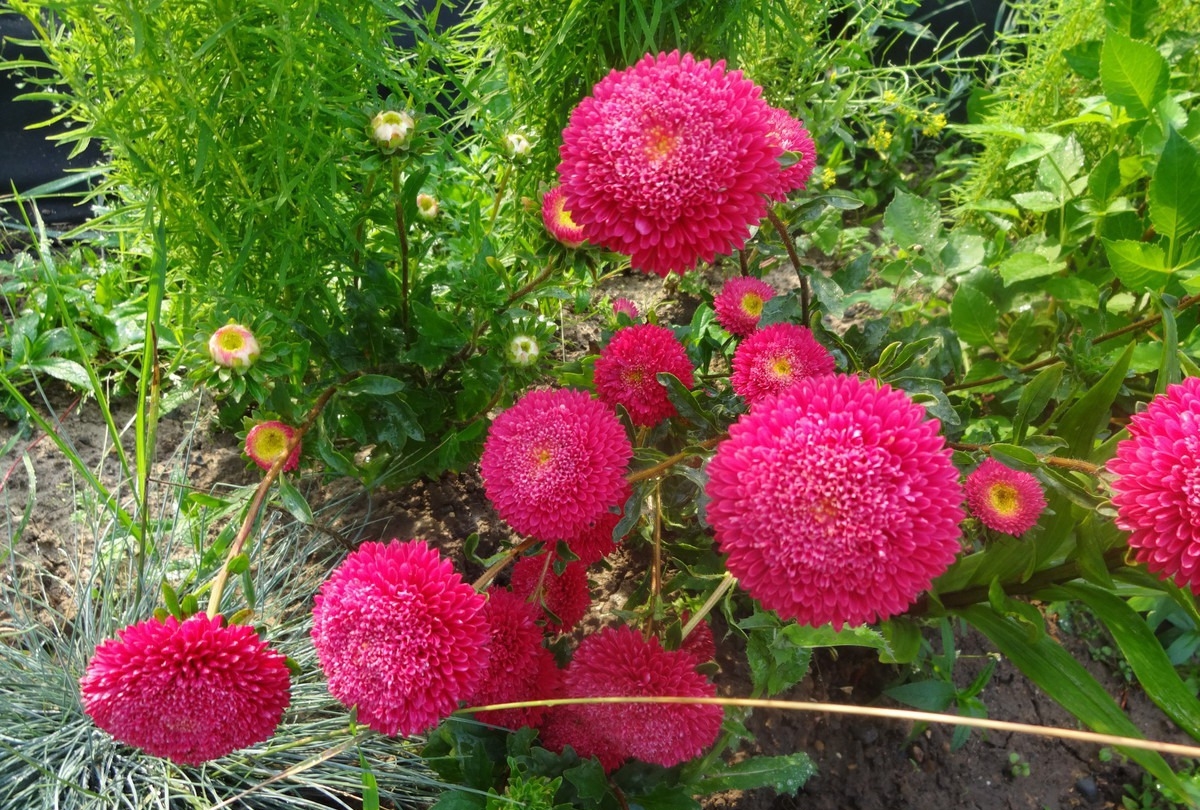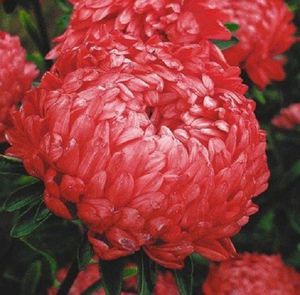 Aster is a flower that amazes with a huge number of colors and an unusual shape. These double flowers are very attractive in appearance and it is rare to see a flower bed, a flower garden or a summer cottage garden where asters are absent.
Aster is a flower that amazes with a huge number of colors and an unusual shape. These double flowers are very attractive in appearance and it is rare to see a flower bed, a flower garden or a summer cottage garden where asters are absent.
In the material we will tell you how to grow an aster, in particular a peony, and other varieties of a flower from seeds, you will also see a photo of some samples of this plant.
Content
Description of asters and photos
Astra is incredibly attractive characterized by long flowering and a lot of colors. At the same time, many call this flower "autumn", because it reveals all its beauty in autumn. Some varieties of asters bloom already in the month of May and delight with their flowering until November. The key characteristics of this flower are:
- aster belongs to Compositae dicotyledonous plants;
- it can be annual and perennial;
- foliage is thick;
- flower height - from 20 to 200 cm;
- flowers are simple, double and semi-double;
- lives in natural conditions in mountainous, steppe and forest regions;
- Aster colors can range from white to deep purple.
Of everything exists about 600 species and 800 varieties of this plant. Also, asters have a developed root system. Their leaves are crenate, have large teeth and a wide oval shape. The stems of the plant are erect and sessile. Inflorescences are baskets in the form of scutes or panicles. In the middle, the flowers are most often small and have a yellow tint, and at the edges they are ligulate and can have different colors. The diameter of the basket can range from 1 to 15 cm.
Varieties of asters
 There are many types, forms and varieties of asters. So, there are:
There are many types, forms and varieties of asters. So, there are:
- spherical;
- simple;
- needle-like;
- pompom;
- peony;
- chrysanthemum;
- rosy;
- radiant and others.
For example, the Versailles variety is peony, and the Dragon is chrysanthemum. Peony asters are often grown by those who prefer to put cut flowers in a vase.
Peony aster: photos, varieties and cultivation
Peony asters have their own distinctive feature: the structure of the inflorescence resembles a peony. Himself flower vaulted globular and has a diameter of up to 10 cm, the outer petals are wide and long, and the inner ones are short and narrow. All of them, except for the extreme ones, go to the middle, creating the shape of a flower. The bush can grow up to 50 cm, the stems branch poorly, so the columnar crown is well preserved.
Most popular varieties:
- Tower;
- Lady;
- Duchess.
Like other types of asters, peony plants are grown from seed by seedling and sowing outdoors.
Peony aster: growing from seed
 For permanent planting, you need to choose a sunny place that is well protected from the wind. Astra does not like stagnant water, therefore you can not plant it next to groundwater... The soil must be well-drained and nutritious.
For permanent planting, you need to choose a sunny place that is well protected from the wind. Astra does not like stagnant water, therefore you can not plant it next to groundwater... The soil must be well-drained and nutritious.
The seed can immediately be planted on the garden bed at the end of April, then it is covered with a film. When shoots appear, they should be thinned out. They are opened on warm days, the entire film is removed closer to summer. Further cultivation is as follows:
- do not forget to carefully and regularly loosen the soil next to the plant;
- water the aster on time;
- before budding and at the beginning of flowering, asters need to be fed.
If you want to plant seeds for seedlings, then they need a nutrient mixture. And sowing is carried out in the month of March. The seeds are scattered over the soil surface and covered with earth. Then everything is watered and covered. The sprouts germinate at a temperature of about 20 degrees, after their appearance it is lowered.
A couple of weeks before transplant carry out feeding and hardening... The seedlings should be under cover for the first 2 weeks.
Stratification as a seed germination method
When growing asters, many specialists use the method of stratification, that is, the contrast of temperature indicators, in order to accelerate the spitting of seeds.
The planting material is laid out on the ground, then it is sprinkled with a 1 cm layer of snow. Under the melting snow, the seed takes root, and the process simulates planting flowers in autumn. A container with sown asters for how many hours is placed in a cold place, and then rearranged into a warm place. Such an alternation of temperatures must be carried out until the seeds are hatched.
When seedlings appear, they need to be planted in separate peat tablets or pots. The stratification process also helps to increase the number of seeds that have taken root after planting.
How to plant asters in the ground?
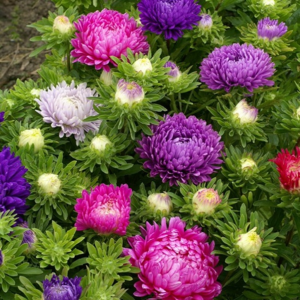 Asters need to be grown in accordance with the required standards. For example, for growing seedlings, the optimum air temperature should be at least 15 degrees... And you need to feed the seedlings twice: the first time in May, using a solution of nitrophoska and Agricola, and the second time in two weeks.
Asters need to be grown in accordance with the required standards. For example, for growing seedlings, the optimum air temperature should be at least 15 degrees... And you need to feed the seedlings twice: the first time in May, using a solution of nitrophoska and Agricola, and the second time in two weeks.
Asters do not like too moist soil. Therefore, it is necessary to water the seedlings very rarely so that the soil does not dry out. Each time the seedlings should be ventilated after watering.
Planting seeds in open ground is preceded by hardening them. After that, the plant will not be afraid of frosts up to 4 degrees below zero. It takes about 2 months from the moment of planting the seeds to transplanting into open soil. If you are planting the seed in mid-March, you can replant the seedlings in mid-May.
Asters should be grown in light and non-swampy soil... In damp areas, flowers may rot. It is advisable to use sandy loam soil or non-acidic chernozem for planting. If the soil is poor, then you still need to fertilize with humus in the fall, and after digging, add components such as:
- ammonium sulfate;
- superphosphate;
- potassium salt.
The flowers are very fond of color, but they master well in a semi-dark place, if the varieties are late, then the site should only be sunny.
In order for the roots of the seedlings to not be damaged, they must be watered before transplanting them into the open ground until the soil is deeply moistened. Then, together with a moistened lump of soil, they are pulled out of the container and rooted in the ground.
The prepared soil should be loose, also mark holes or furrows on it in advance, water it. After planting the asters, sprinkle the bottom with dry soil and compact so that the plants are as resistant as possible.
Water the seedlings to the root... After final rooting in the open field, the care regimen is as follows:
- 3 days asters are watered;
- 1 day the soil is loosened.
Seedless method of planting seeds
If you live in warm climates, then the annual plant can be grown without seedlings. Seeds that are planted immediately outdoors tend to bloom more abundantly and resist disease well. The only drawback in this case is that flowering occurs later.
The seed is planted in the ground at the end of April, when the ground is warm enough and is not taken in lumps, or closer to winter. When shoots appear and the first true leaves appear, they are planted, leaving a distance between the flowers of about 15 cm. Then they are thinned out, if necessary. If you plant asters in the ground in April, they will bloom later than seedlings, by two weeks. And the seeds planted in November will bloom in the month of May.
How to care for asters
Asters are not too demanding in terms of care. You just need follow these rules:
- on time and enough to water;
- do not forget to loosen and weed the soil;
- apply fertilizers.
You should also monitor soil moisture. It is necessary to loosen it after watering and rains, so that excess moisture evaporates. In hot weather, you need to water the aster abundantly, but infrequently.
In order for the root system of a flower to develop normally, you need to spud the flowers. And regular weeding will reduce the risk of disease.
Fertilize asters during the growing season and when the first flowers appear.
Potential diseases and dangerous pests
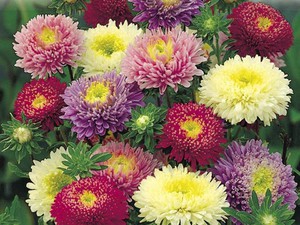 The cultivation of asters can be associated with problems in the form of diseases and negative effects from pests.
The cultivation of asters can be associated with problems in the form of diseases and negative effects from pests.
For example, incorrect crop rotation can provoke fusarium wilting... Such a disease appears during flowering and manifests itself in the form of lethargy of the plant and falling of petals. Damaged flowers must be burned.
Another dangerous disease is powdery mildew, which appears due to such factors:
- poorly nutritious soil;
- wrong watering regime;
- thickened plantings.
It manifests itself in the form of a gray-white bloom on the stems and leaves. You can fight the disease with the help of Topaz and Sulfarid preparations.
Aster can be attacked by a fungus, it can be recognized by the dark ring spots on the leaves. They need to be removed and burned, and the plant should be treated with "Fundazol" or "Polychom".
Jaundice is a disease in which the plant becomes covered with yellow spots. Flowers diseased in this way are urgently removed, they cannot be treated.
In order to prevent gray rot before flowering aster treated with copper-based products:
- bordeaux liquid;
- copper sulfate;
- copper chloride.
Gray rot appears as a gray-white bloom. The affected areas must be removed. The disease occurs due to excess moisture and excess nitrogen in the soil.
Pests
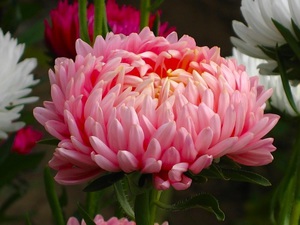 Pests are also very dangerous for asters. The most serious enemies of this flower are leaf and root nematodes, which leave brown spots between the veins of the leaves. The leaves are removed; in case of severe damage, the entire plant is removed.
Pests are also very dangerous for asters. The most serious enemies of this flower are leaf and root nematodes, which leave brown spots between the veins of the leaves. The leaves are removed; in case of severe damage, the entire plant is removed.
Eaten leaves and foam formations - a consequence of the activity of the slobbering penny. The plant must be rinsed with a hose and treated with garlic infusion.
In hot and dry weather, a spider mite is an unwanted guest for asters. At the same time, they must be treated with soapy water and sprayed with infusions based on onion peels, garlic, dandelion, makhorka and other means.
Everyone knows what beautiful flowers are asters. They can be a decoration of a garden, plot, or stand for a long time in a cut vase. And in order for this plant to bring you aesthetic pleasure, you need to properly care for it.
